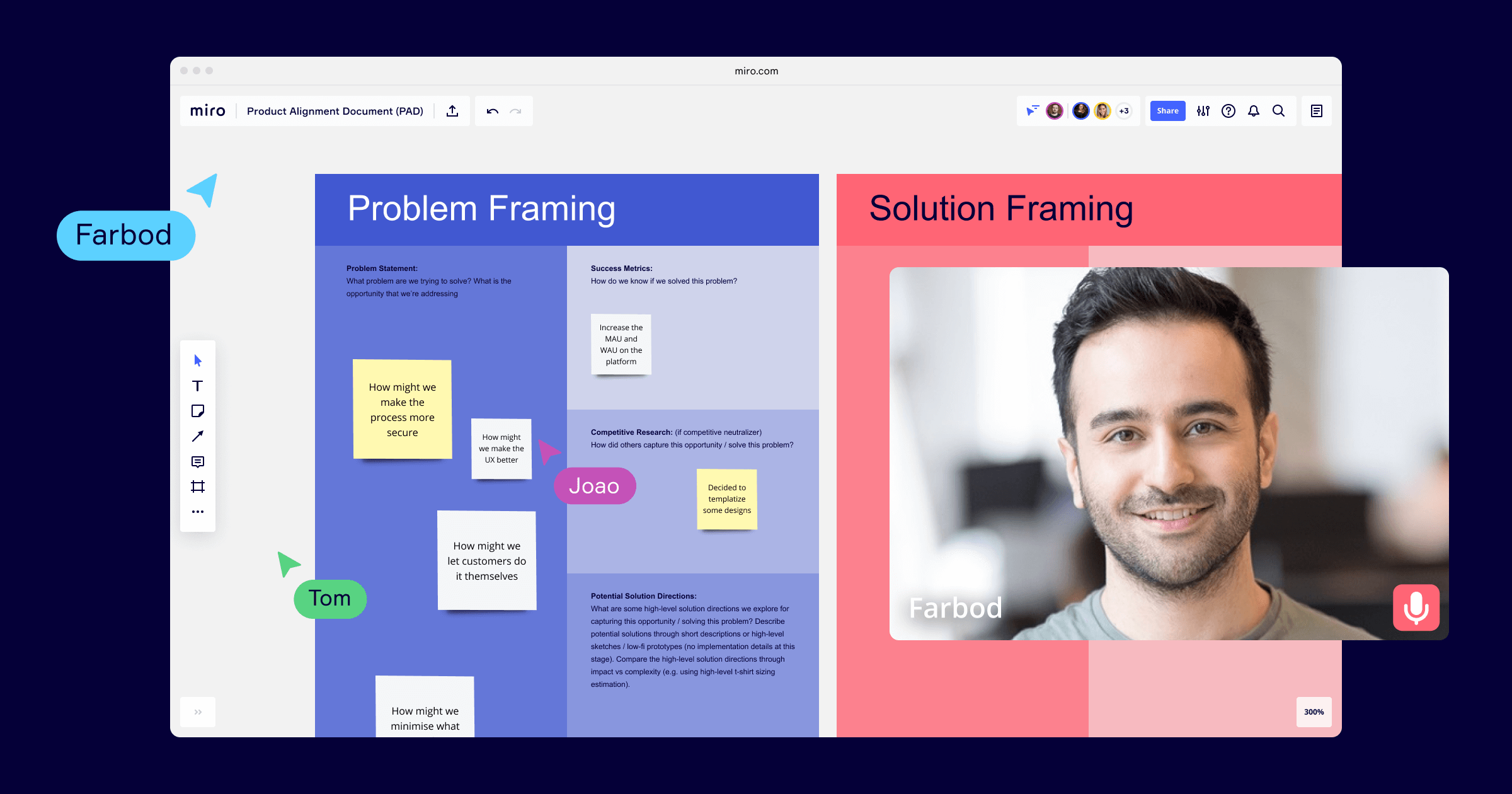Sixty percent of product managers (PMs) say that they want to learn more about how to build a product strategy, according to a 2022 Product Management Festival report. This is not surprising since a PM can drive more impact in their organization by being a strategic thinker. In fact, research by the Management Research Group suggests that behaviors associated with strategic thinking skills are:
- 10x more important to the perception of effectiveness than other behaviors
- Perceived to be 50x more important than hands-on tactical behaviors
Product strategy is like a story a PM tells themselves, their team, and their stakeholders. While a clear product mission represents a destination, the product strategy is a story of the journey to this destination. This story has multiple elements, and the challenge is to connect its points in a cohesive and actionable plan.
I have tried many product strategy frameworks at different companies. In doing so, I have observed that teams tend to approach strategies as a one-time exercise; they share a strategy in a big meeting and then put it on a shelf to collect dust.
A product strategy generates much more value if it is approached as a living document. PMs should regularly evaluate and revise the plan based on new insights and an evolving product and market landscape.
This is how we approach product strategy at Miro. We make it valuable, actionable, and, importantly, ensure it serves product teams’ needs continuously. The trick to a successful product strategy is focusing on the core aspects that deliver 80%+ of the strategy’s value.
4 valuable components of a successful product strategy
Beyond reiterating the product mission and establishing the strategy’s connection to company goals, the four most valuable components of a product strategy are:
- What Success Looks Like (WSLL)
- Current Context
- Big Bets
- Initiatives Map
These four components are the most dynamic parts of a strategy, so they require timely alignment across the team to keep the strategy valuable after its initial creation. Let’s dive into each element in more detail.
Learn more about Miro for product management

1. What Success Looks Like (WSLL)
The WSLL part of the strategy represents measurable goals for the product. As the product evolves and company priorities change, so change the goals. Defining a shortlist of measurable outcomes that their product will drive helps keep product teams hyper-focused on impact.
Setting measurable product goals is an essential part of any successful product strategy. Good product goals are:
- Clearly connected to broader company goals, enabling the team to understand how their work contributes to the company’s overall success;
- Easily understood by the team responsible for achieving them, ensuring that everyone is working towards the same objectives;
- And non-ambiguously measurable, providing the team with clear feedback on how they are progressing toward their goals.
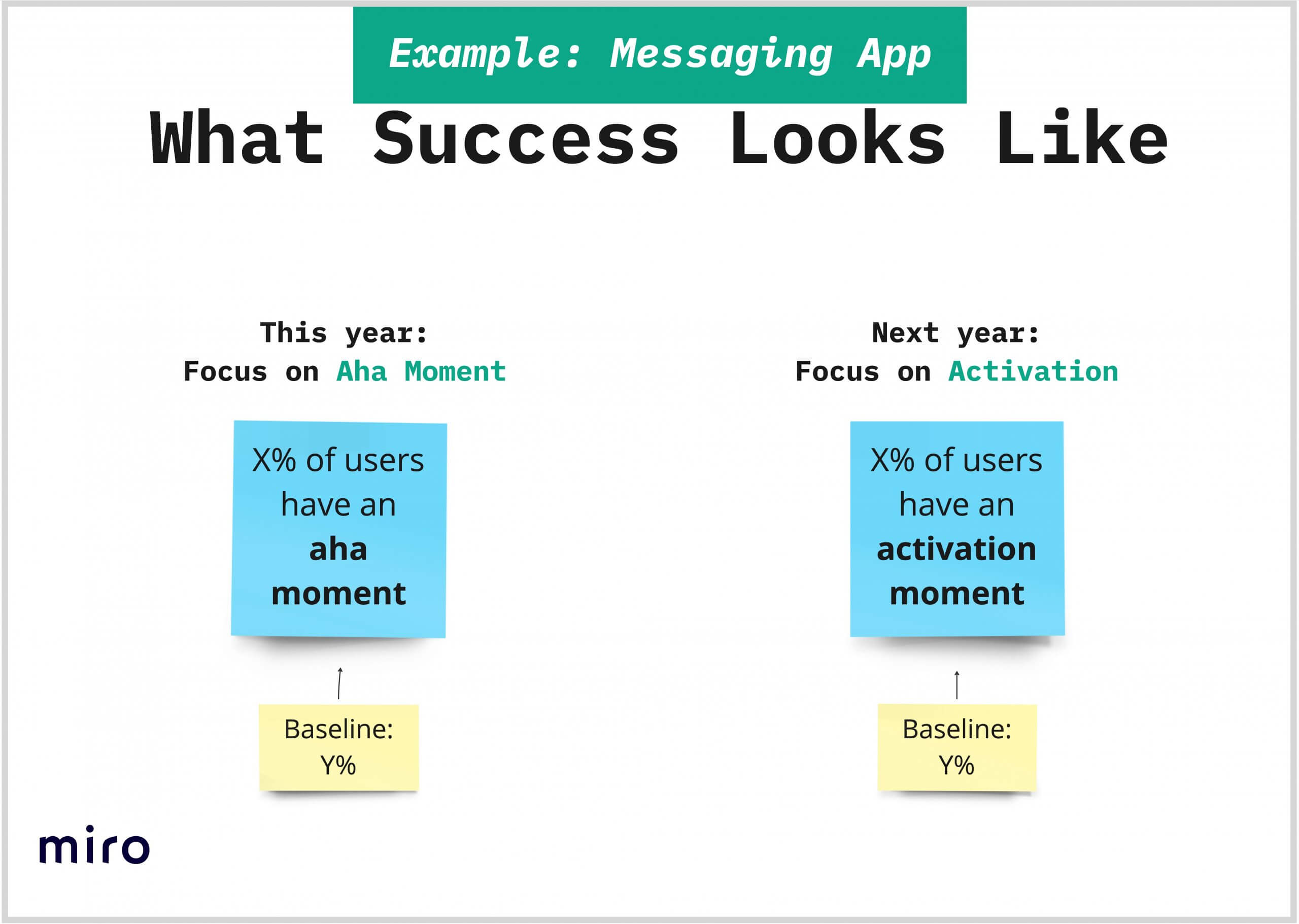
2. Current Context
The Current Context section of the strategy is a snapshot of qualitative and quantitative data that reduces assumptions and opinion-based prioritization. It allows a product team to identify the most significant challenges their users face and potential areas for investment based on company priorities and market changes.
At Miro, we partner with the Product Analytics and User Research teams to set a strategy’s context. Together we talk to users to get a deep understanding of their behaviors and needs, and investigate contextual factors like the competitive landscape and emerging technology trends. The more data-driven and robust our context assessment, the better able we are to hone in on the most critical problem that we intend to solve with our strategy and the highest potential solution that we’ll pursue.
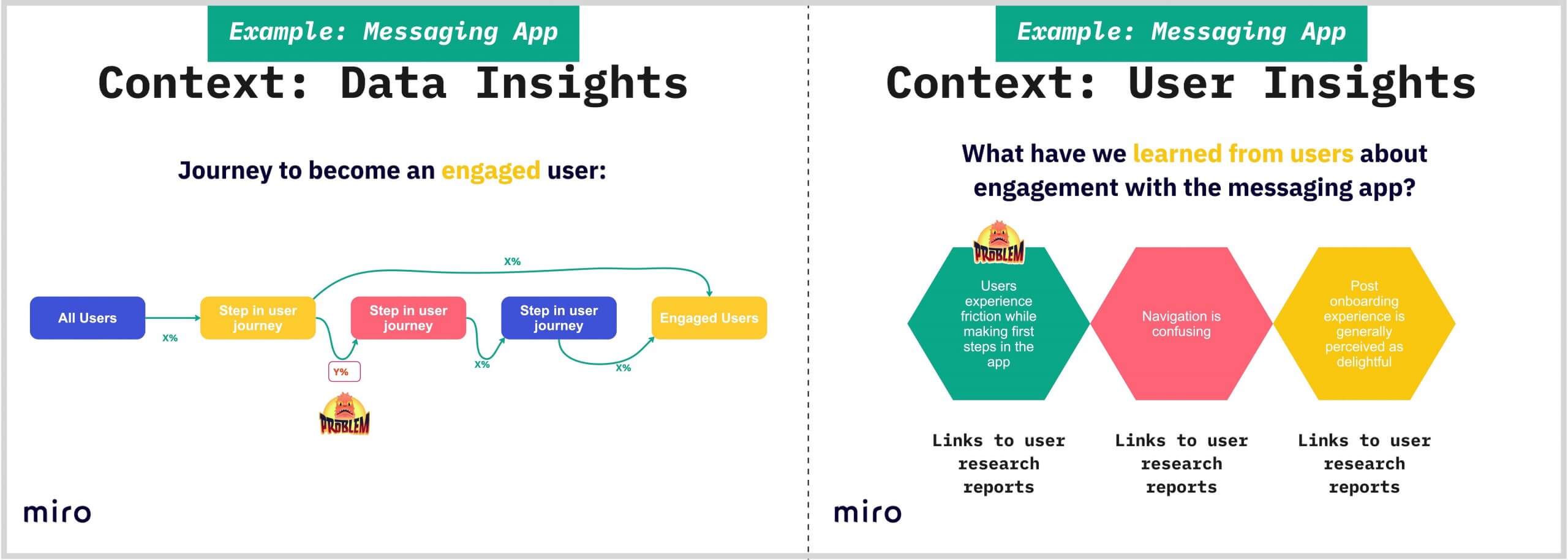
3. Big Bets
That’s why the context assessment is essential to identifying the Big Bets. The Big Bets are two to three areas of investment that will deliver the greatest return on effort. They represent the most promising levers that we can pull to move the success metrics that we defined in the WSLL section.
Within the Big Bets part of the strategy, we explicitly highlight its connection to the company’s annual goals and estimate its measurable impact on the product goals we can drive in the coming 12 months. Doing so helps us minimize assumptions and have a high level of confidence in the opportunities we’ve selected.
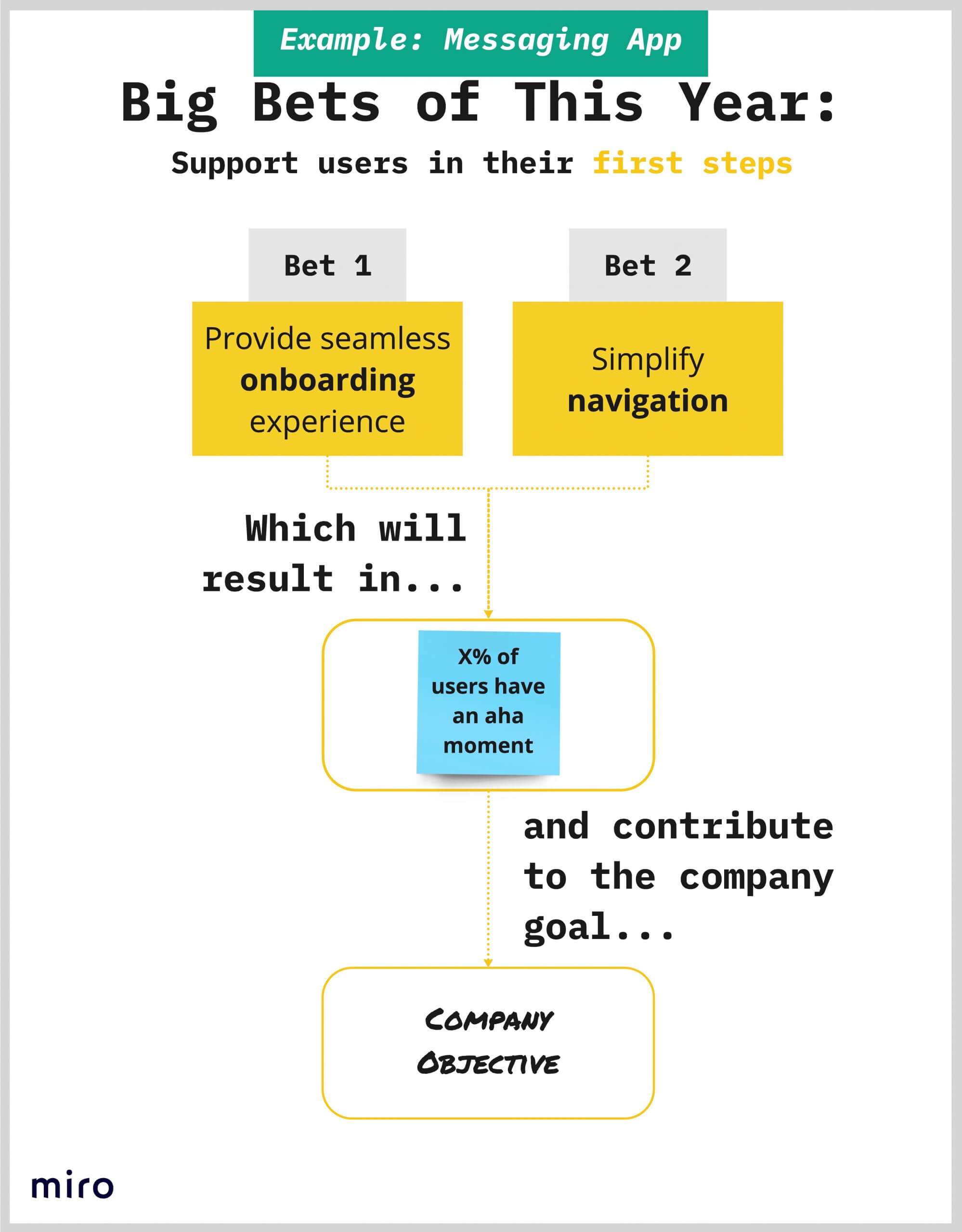
4. Initiatives Map
The Initiatives Map is an ever-evolving list of initiatives that align with each Big Bet. It offers a glimpse into tangible tactics, without overwhelming stakeholders with too many small steps. Including it helps ensure your strategy strikes the right balance between illustrating a high-level vision and detailing a clear path to success that inspires both motivation and confidence.
We often follow the Now-Next-Future approach when creating an Initiatives Map at Miro. We organize planned initiatives into three buckets based on our level of certainty and validation:
- “Now” initiatives are already underway and are typically validated and scoped. We know what we’re building and have a high confidence estimation of when they will each be completed.
- “Next” initiatives are those that we’re currently validating and scoping. They will begin after “Now” initiatives are completed. So, we know when they would start (if validated), but not when they would be completed.
- “Future” initiatives are those that we have yet to begin validating, scoping, and sizing. We know neither if nor when we will start working on them, nor how long they will take.
There is a simple reason we don’t commit to initiatives beyond those in the “Now” bucket. The strategy should focus on outcomes rather than outputs. We must all be on the same page regarding the impact we’ll drive, but the actual product work that we pursue may change along the way.
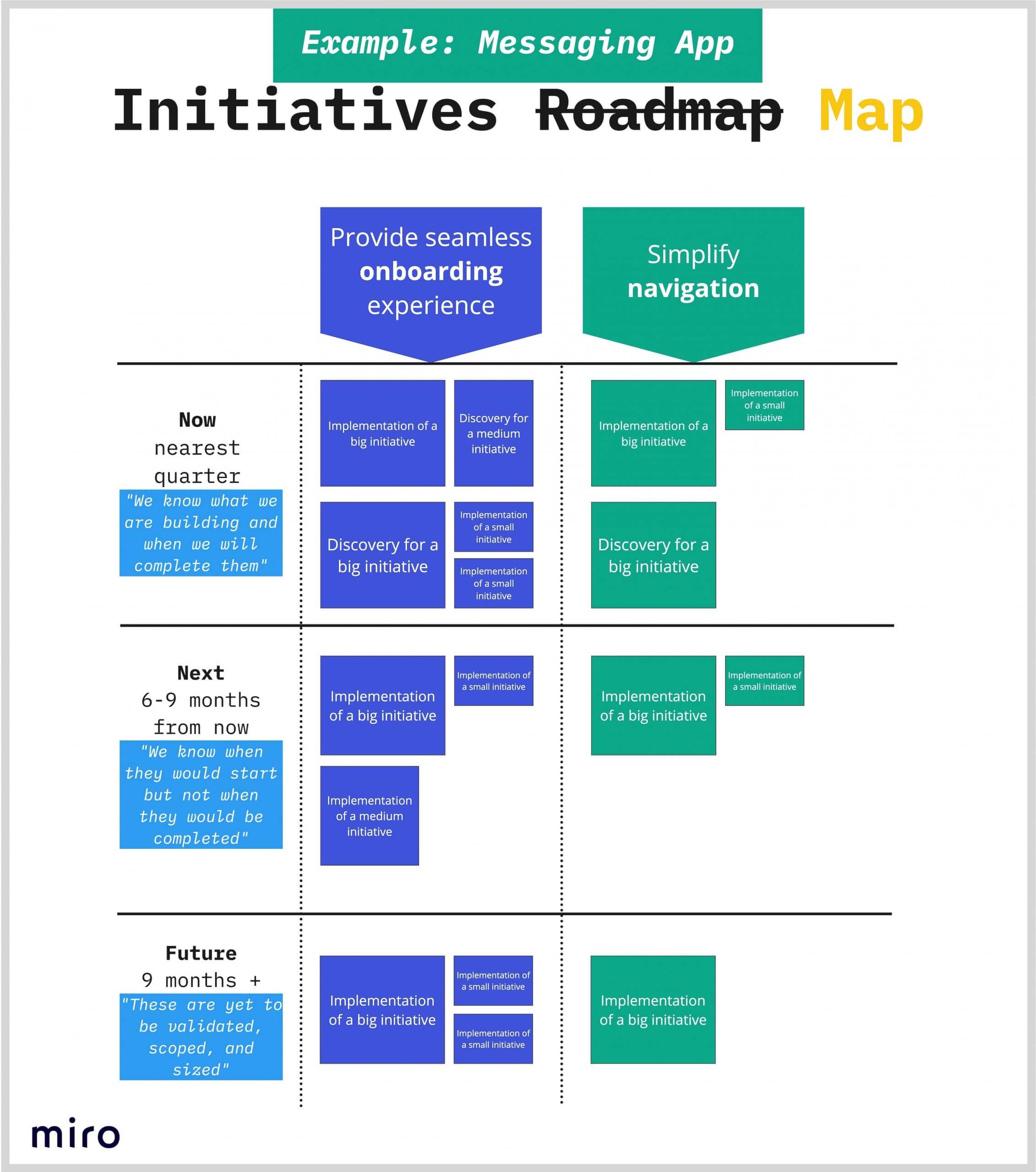
These four elements comprise the most essential parts of the product strategy story. WSLL measures progress toward the product mission. Contextual data and user insights allow for an unambiguous selection of the Big Bets. And, with the focus provided by the Big Bets, the strategy gives a glimpse into potential initiatives that would contribute to each Bet.
Importantly, the product strategy story is dynamic. It evolves as the team progresses and its context changes. PMs may revise WSLL to better align with the company’s evolving goals; update the Current Context as new insights are made available; and adjust the Big Bets and Initiatives Map to keep their teams on track.
How often should a product strategy be updated? It depends on the company, but the rule of thumb is that it should be updated every six months so that the team can benefit from it by using it for quarterly OKR planning, team alignment, saying “no” to external requests, or updates to leadership.
Remember that socializing your strategy is just as important as the strategy itself. Your plan has no value if it’s poorly understood across the organization, preventing you from achieving alignment and support. So don’t skimp on a strategy for communicating your strategy and check our product strategy templates!



